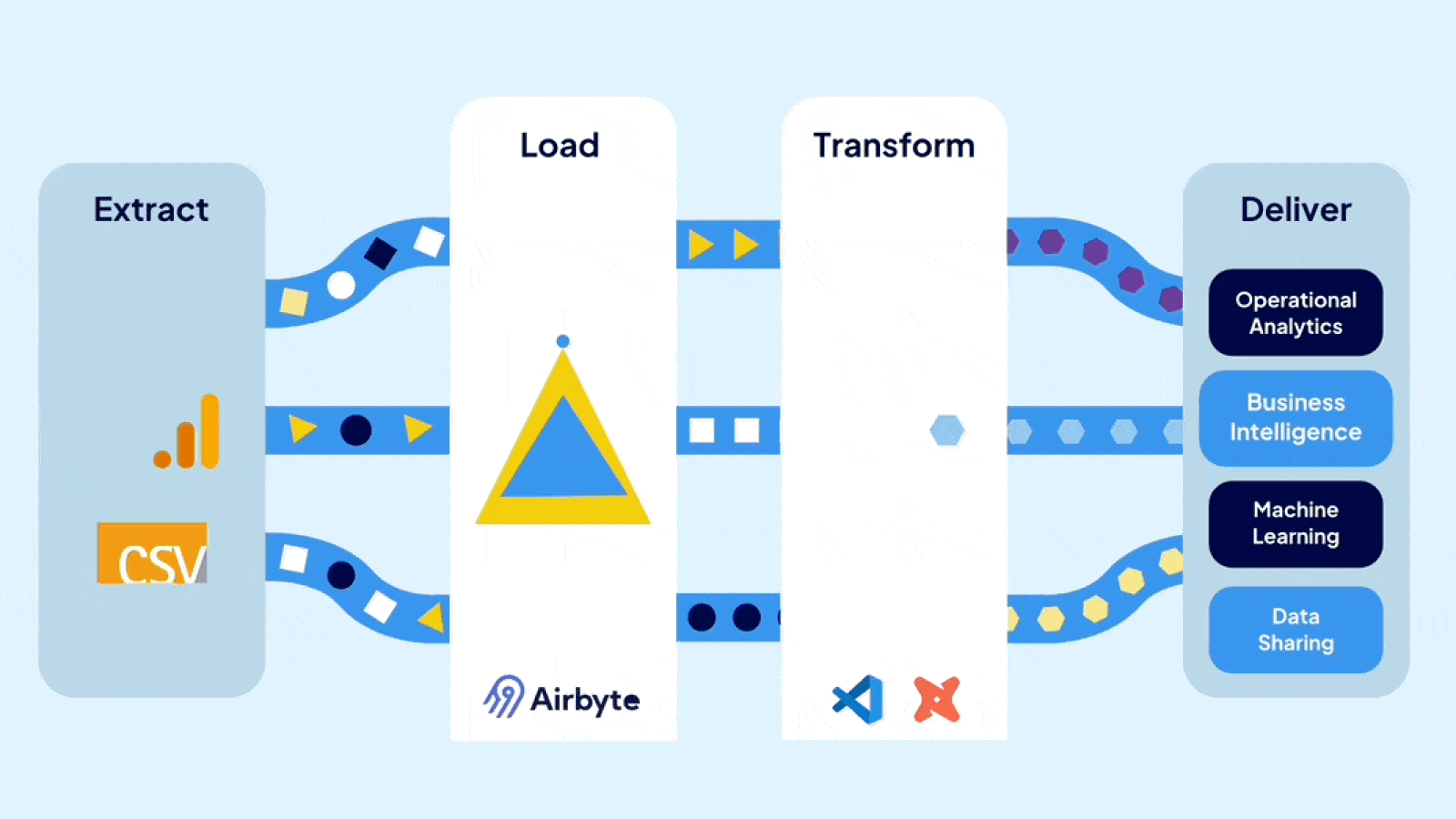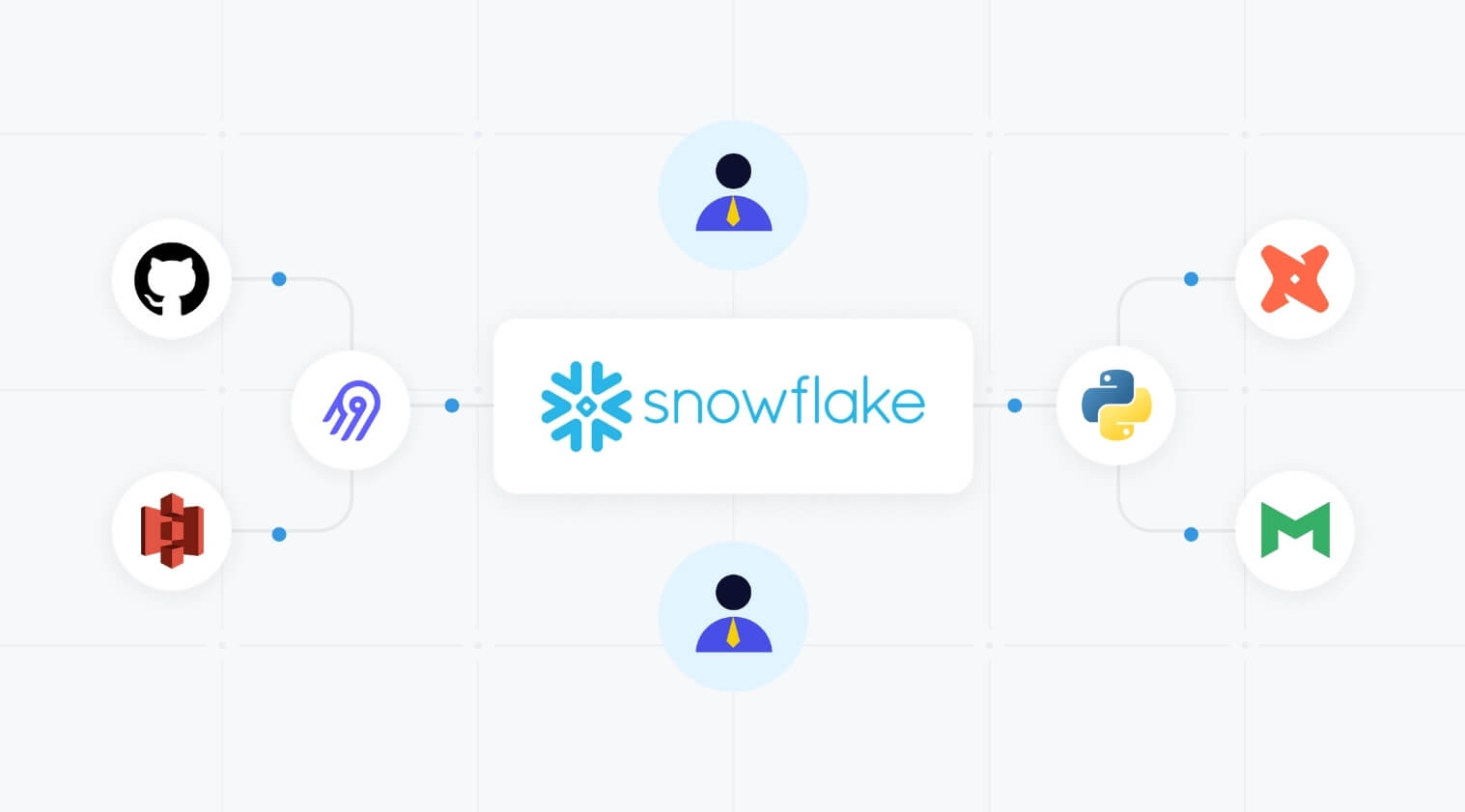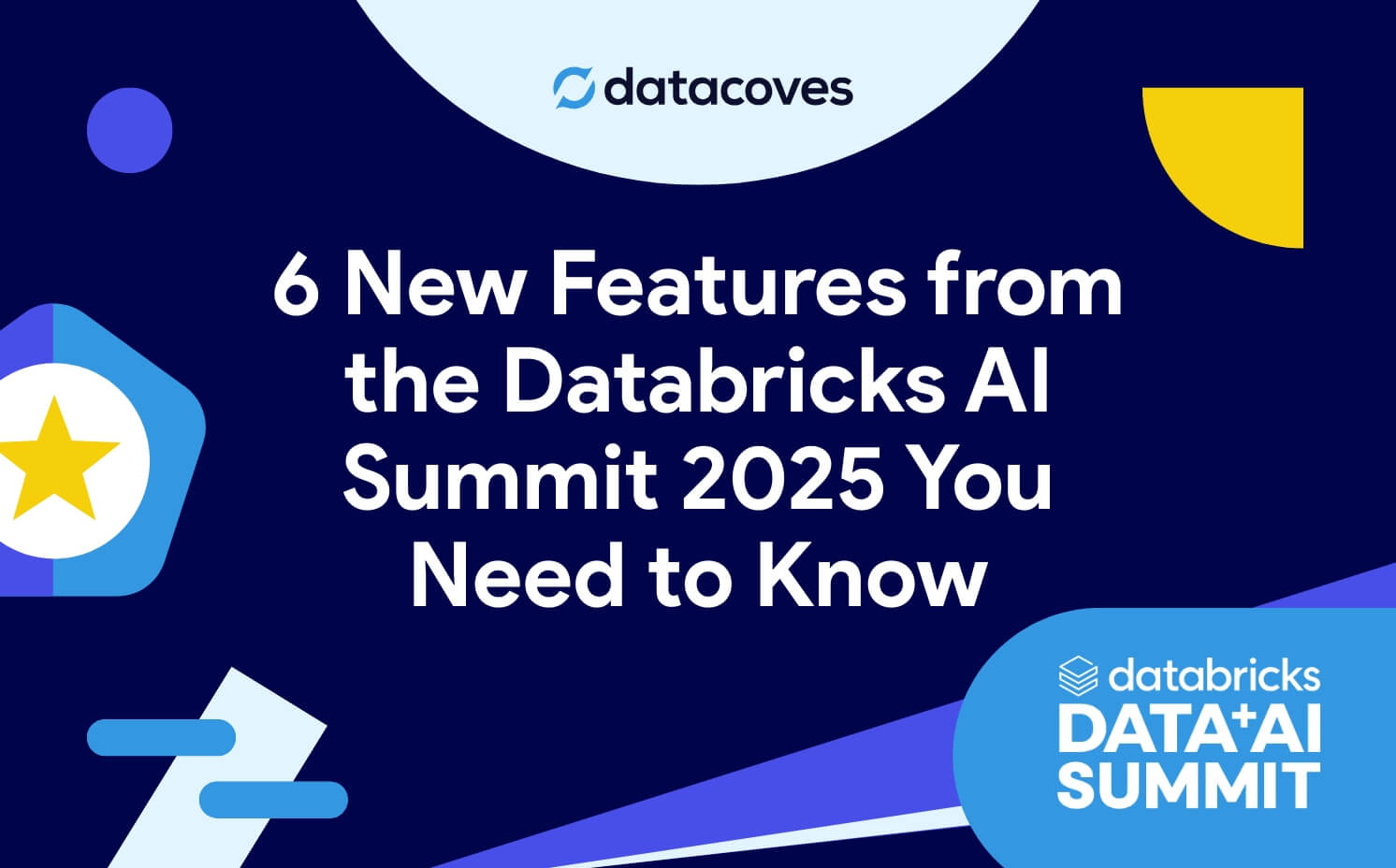Data orchestration is the foundation that ensures every step in your data value chain runs in the correct order, with the right dependencies, and with full visibility. Without it, even the best tools such as dbt, Airflow, Snowflake, or your BI platform operate in silos. This disconnect creates delays, data fires, and unreliable insights.
For executives, data orchestration is not optional. It prevents fragmented workflows, reduces operational risk, and helps teams deliver trusted insights quickly and consistently. When orchestration is built into the data platform from the start, organizations eliminate hidden technical debt, scale more confidently, and avoid the costly rework that slows innovation.
In short, data orchestration is how modern data teams deliver reliable, end-to-end value without surprises.
In today’s fast-paced business environment, executives are under increased pressure to deliver quick wins and measurable results. However, one capability that is often overlooked is data orchestration.
This oversight can sabotage progress as the promise of data modernization efforts fails to deliver expected outcomes in terms of ROI and improved efficiencies.
In this article, we will explain what data orchestration is, the risks of not implementing proper data orchestration, and how executives benefit from end-to-end data orchestration.
What Is Data Orchestration? (Simple Definition for Executives)
Data orchestration ensures every step in your data value chain runs in the right order, with the right dependencies, and with full visibility.

Data orchestration is the practice of coordinating all the steps in your organization’s data processes so they run smoothly, in the right order, and without surprises. Think of it as the conductor ensuring each instrument plays at the right time to create beautiful music.
Generating insights is a multi-tool process. What’s the problem with this setup? Each of these tools may include its own scheduler, and they will each run in a silo. Even if an upstream step fails or is delayed, the subsequent steps will run. This disconnect leads to surprises for executives expecting trusted insights. This in turn, leads to delays and data fires, which are disruptive and inefficient for the organization.
Imagine you are baking a chocolate cake. You would need a recipe, all the ingredients, and a functioning oven. However, you wouldn’t turn on the oven before buying the ingredients and mixing the batter if your milk had spoiled. Not having someone orchestrating all the steps in the right sequence would lead to a disorganized process that is inefficient and wasteful. You also know not to continue if there is a critical issue, such as spoiled milk.
Data orchestration solves the problem of having siloed tools by connecting all the steps in the data value chain. This way, if one step is delayed or fails, subsequent steps do not run. With a data orchestration tool, we can also notify someone to resolve the issue so they can act quickly, reducing fires and providing visibility to the entire process.
Key Components of Modern Data Orchestration
- Coordinated Workflows: Makes sure all tools and teams work together without unnecessary manual steps.
- Problem Detection: Identifies issues early so they don’t disrupt reporting or decision-making.
- Clear Oversight: Gives executives and teams visibility into the data value chain across the organization.
- Scalable Processes: Ensures your data operations can grow with your business without causing chaos.
Data Orchestration vs. ETL (Clear Distinction)
ETL (Extract, Transform, and Load) focuses on moving and transforming data, but data orchestration is about making sure everything happens in the right sequence across all tools and systems. It’s the difference between just having the pieces of a puzzle and putting them together into a clear picture.
Why Orchestration Matters: The Business Case
Faster, More Reliable Analytics Delivery
Without data orchestration, even the best tools operate in silos, creating delays, data fires, and unreliable insights.
Executives make many decisions but rarely have the time to dive into technical details. They delegate research and expect quick wins, which often leads to mixed messaging. Leaders want resilient, scalable, future-proof solutions, yet they also pressure teams to deliver “something now.” Vendors exploit this tension. They sell tools that solve one slice of the data value chain but rarely explain that their product won't fix the underlying fragmentation. Quick wins may ship, but the systemic problems remain.
Data orchestration removes this friction. When workflows are unified, adding steps to the data flow is straightforward, pipelines are predictable, and teams deliver high-quality data products faster and with far fewer surprises.
Reduced Firefighting and Operational Risk
A major Datacoves customer summarized the difference clearly:
“Before, we had many data fires disrupting the organization. Now issues still occur, but we catch them immediately and prevent bad data from reaching stakeholders.”
Without orchestration, each new tool adds another blind spot. Teams don’t see failures until they hit downstream systems or show up in dashboards. This reactive posture creates endless rework, late-night outages, and a reputation problem with stakeholders.
With orchestration, failures surface early. Dependencies, quality checks, and execution paths are clear. Teams prevent incidents instead of reacting to them.
Governance and Visibility Across the Data Lifecycle
Data orchestration isn’t just about automation; it’s about governance.
It ensures:
- Clear ownership
- Predictable workflows
- Consistent development processes
- End-to-end visibility across ingestion, transformation, analytics, and activation.
This visibility dramatically improves trust. Stakeholders no longer get “chocolate cake” made with spoiled milk. A new tool may bake faster, but if upstream data is broken, the final product is still compromised.
Orchestration ensures the entire value chain is healthy, not just one ingredient.
Supports Ingestion and dbt Scheduling with Airflow
Modern data teams rely heavily on tools like dbt and Airflow, but these tools do not magically align themselves. Without orchestration:
- dbt jobs run inconsistently
- Airflow DAGs are difficult to track across environments
- Quality checks run out of order, or not at all
With orchestration in place, ingestion, dbt scheduling, and activation become reliable, governed, and transparent, ensuring every step runs at the right time, in the right order, with the right dependencies. Learn more in our guide on the difference between dbt Cloud vs dbt Core.
For more details on how dbt schedules and runs models, see the official dbt documentation.
To learn how Airflow manages task dependencies and scheduling, visit the official Apache Airflow documentation.
Data orchestration:
- Bridges gaps across systems
- Reduces hidden costs and technical debt
- Provides end-to-end visibility
- Prevents costly rework as you scale
The Cost of NOT Having Orchestration
It is tempting to postpone data orchestration until the weight of data problems makes it unavoidable. Even the best tools and talented teams can struggle without a clear orchestration strategy. When data processes aren’t coordinated, organizations face inefficiencies, errors, and lost opportunities.
Implementing data orchestration early reduces hidden technical debt, prevents rework, and helps teams deliver trusted insights faster.
Fragmented Tools Create Operational Inefficiencies
When data pipelines rely on multiple systems that don’t communicate well, teams spend extra time manually moving data, reconciling errors, and firefighting issues. This slows decision-making and increases operational costs.
Common symptoms of fragmented tools include:
- Manual data movement
- Frequent reconciliations
- Increased firefighting
- Slower decision-making
Quick Wins Without Orchestration Create Long-Term Pain
Many organizations focus on a “quick wins” approach only to discover that the cost of moving fast was long-term lack of agility and technical debt. This approach may deliver immediate results but leads to technical debt, wasted spend, and fragile data processes that are hard to scale. A great example is Data Drive’s journey, before adding data orchestration, when issues occurred, they had to spend time debugging each step of their disconnected process. Now it is clear where an issue has occurred, enabling them to resolve issues faster for their stakeholders.
Costly Rework and Compounding Technical Debt
As organizations grow, the absence of orchestration forces teams to revisit and fix processes repeatedly. Embedding orchestration from the start avoids repeated firefighting, accelerates innovation, and makes scaling smoother. Improving one step alone cannot deliver the desired outcome, just like a single egg cannot make a cake.
Limited Visibility Erodes Trust in Insights
Organizations without data orchestration are effectively flying blind. Disconnected processes run out of order and issues are discovered by frustrated stakeholders. Resource-constrained data teams spend their time firefighting instead of delivering new insights. The result is delays in decision-making, higher operating costs, and an erosion of trust in data. Embedding orchestration from the start avoids repeated firefighting, accelerates innovation, and makes scaling smoother.

Common Roadblocks and How to Avoid Them
If data orchestration is so important, why do organizations go without it? We often hear some common objections:
Roadblock: Lack of Awareness
Many organizations have not heard of data orchestration and tool vendors rarely highlight this need. It’s only after a painful experience that they realize this essential need.
Roadblock: It Will Add Complexity
It’s true that data orchestration adds another layer, but without it, you have disconnected, siloed processes. The real cost comes from chaos, not from coordination.
Roadblock: Another Tool Will Make Things Harder
Vendor sprawl can indeed introduce additional risks, that’s why all-in-one platforms like Datacoves reduce integration overhead by bundling enterprise-grade orchestration, like Airflow, without increasing vendor lock-in. Explore Datacoves’ Integrated Orchestration Platform.
Roadblock: Orchestration Makes Processes More Complex
Data value chains are inherently complex, with multiple data sources, ingestion processes, transformations, and data consumers. Data orchestration does not introduce complexity; it provides visibility and control over this complexity.
It may seem reasonable to postpone data orchestration in the short term. But every mature data organization, both large and small, eventually needs to scale. By building-in data orchestration into the data platform from the start, you set up your teams for success, reduce firefighting, and avoid costly and time-consuming rework. Most importantly, the business receives trustworthy insights faster.
How to Implement Data Orchestration Successfully
Implementing data orchestration doesn’t have to be complicated. The key is to approach it strategically, ensuring that every process is aligned, visible, and scalable.
Step 1: Start with a Clear, Business-Aligned Plan
Begin by mapping your existing data processes and identifying where inefficiencies or risks exist. Knowing exactly how data flows across teams and tools allows you to prioritize the areas that will benefit most from orchestration.
Key outcomes:
- Clear understanding of current workflows
- Prioritized areas for improvement
- Better alignment across teams
Step 2: Automate High-Value Workflows First
Focus first on automating repetitive and error-prone steps such as data collection, cleaning, and routing. Automation reduces manual effort, frees up your team for higher-value work, and ensures processes run consistently.
Key outcomes:
- Reduced manual effort
- More consistent execution
- Teams freed for strategic work
Step 3: Build Cross-Pipeline Visibility and Monitoring
Implement dashboards or monitoring tools that provide executives and teams with real-time visibility into data flows. Early detection of errors prevents costly mistakes and increases confidence in the insights being delivered.
Key outcomes:
- Faster error detection
- Increased trust in insights
- Smoother incident response
Step 4: Scale Gradually with Dependencies and Governance
Start small with high-impact processes and expand orchestration across more workflows over time. Scaling gradually ensures that teams adopt the changes effectively and that processes remain manageable as data volume grows.
Key outcomes:
- More predictable scaling
- Stable workflows as volume grows
- Stronger process governance
Step 5: Choose Tools that Align with Ingestion & dbt Scheduling
Select tools that integrate well with your existing systems, and provide flexibility for future growth. Popular orchestration tools include dbt and Airflow, but the best choice depends on your organization’s specific workflows and needs. Explore how these capabilities come packaged in the Datacoves Platform Features overview.
Key outcomes:
- Better tool compatibility
- Lower integration overhead
- Simpler long-term evolution of your stack
Top Benefits and ROI of Data Orchestration
Investing in data orchestration delivers tangible business value. Organizations that implement orchestration gain efficiency, reliability, and confidence in their decision-making.
Improved Efficiency Across Data & Analytics Teams
Data orchestration reduces manual work, prevents duplicated efforts, and streamlines processes. Teams can focus on higher-value initiatives instead of firefighting data issues.
More Reliable, Trustworthy Insights
With coordinated workflows and monitoring, executives and stakeholders can trust the data they rely on. Decisions are backed by accurate, timely, and actionable insights.
Reduced Operational Costs and Technical Debt
By embedding data orchestration early, organizations avoid expensive rework, reduce errors, and prevent the accumulation of technical debt from ad hoc solutions.
Faster Innovation and Scalable Growth
Data orchestration ensures that data pipelines scale smoothly as the organization grows. Teams can launch new analytics initiatives faster, confident that their underlying processes are robust and repeatable.
Enhanced Visibility Across the Data Lifecycle
Executives gain a clear view of the entire data lifecycle, enabling better oversight, risk management, and strategic planning.
Final Recommendation: Orchestration Is the Foundation, Not the Finish Line
Data orchestration should not be seen as a “nice to have” feature that can be postponed. Mature organizations understand that it is the foundation needed to deliver trusted insights faster. Without it, companies risk setting up siloed tools, increased data firefighting, and eroding trust in both the data and the data team. With it, organizations gain visibility, agility, and the confidence that insights fueling decisions are accurate.
The real question for strategic leaders is whether to try to piece together disconnected solutions, focusing only on short-term wins, or invest in data orchestration early and unlock the full potential of a connected ecosystem.
For executives, prioritizing data orchestration will mean fewer data fires, accelerated innovation, and an environment where trusted insights flow as reliably as the business demands.
To see how orchestration is built into the Datacoves platform, visit our Integrated Orchestration page.
Don’t wait until complexity forces your hand. Your team deserves to move faster and fight fewer fires.
Book a personalized demo to see how data orchestration with Datacoves helps leaders unlock value from day one.



-Photoroom.jpg)




